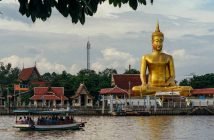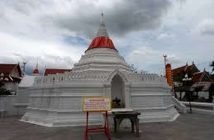 Thailand is known for its many islands, Samui Pha Ngan, Lipe, Phi Phi Don, Phuket, etc., but one that is not quite so well known, yet near the Country’s capital, is Ko Kret.
Thailand is known for its many islands, Samui Pha Ngan, Lipe, Phi Phi Don, Phuket, etc., but one that is not quite so well known, yet near the Country’s capital, is Ko Kret.
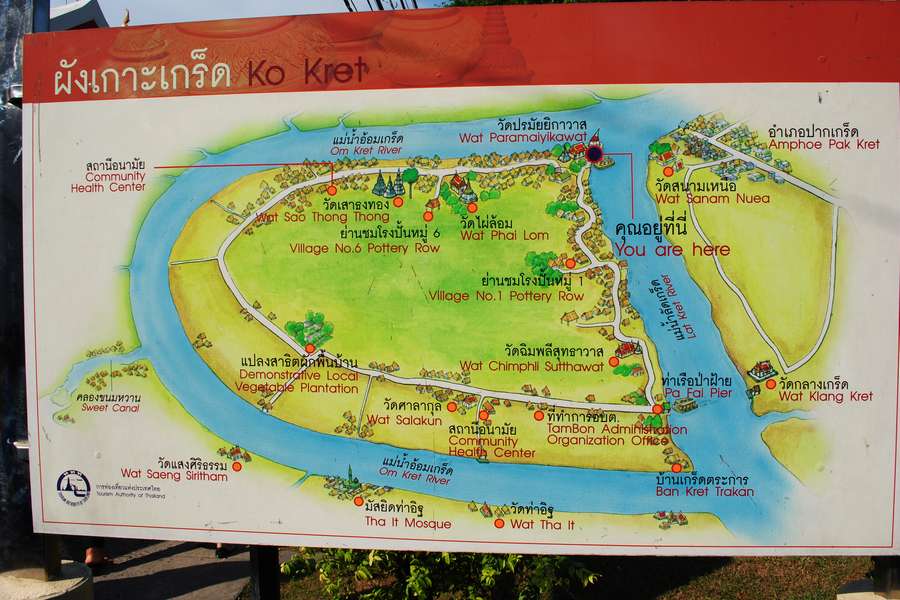 Ko Kret was created during the reign of King Taisra in 1722. Taisra wanted a faster water transportation route to improve his Kingdom’s economy. To solve the problem he brought down the Mon hilltribe people from Northern Thailand to dig a canal, turning a peninsula into an island and thus enabling a quicker trade route. Ko Kret thrived until the Burmese invaded the area in 1767. After fighting off the Burmese, the new King, King Taksin, allowed the Mon Hill Tribe people to settle down on Ko Kret.
Ko Kret was created during the reign of King Taisra in 1722. Taisra wanted a faster water transportation route to improve his Kingdom’s economy. To solve the problem he brought down the Mon hilltribe people from Northern Thailand to dig a canal, turning a peninsula into an island and thus enabling a quicker trade route. Ko Kret thrived until the Burmese invaded the area in 1767. After fighting off the Burmese, the new King, King Taksin, allowed the Mon Hill Tribe people to settle down on Ko Kret.
Ko Kret is another world compared to Bangkok and much of it retains the air of a rustic village, with wooden shacks propped against palm trees and the occasional dilapidated temple slowly crumbling. It’s a great place to wander around the streets and chill out at the many coffee bars and restaurants.
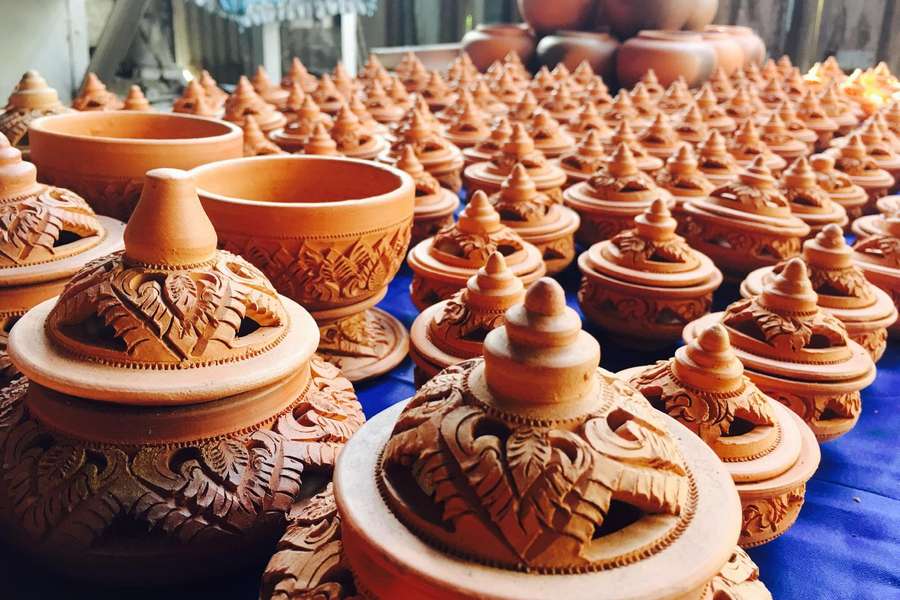 Ko Kret is renowned above all as a centre for kwan aman, a style of Mon pottery, which is unglazed terraocotta carved with intricate patterns. Prices for the simplest and smallest pots start from as low as 5 baht a piece but can go up to hundreds or even thousands of baht for large ornate pieces. Particularly popular among visitors are candle and incense holders with ornate patterns of holes to let the smoke or light out, averaging around 200 baht. There are some 20 pottery workshops on the island and you will see many kilns as you walk around.
Ko Kret is renowned above all as a centre for kwan aman, a style of Mon pottery, which is unglazed terraocotta carved with intricate patterns. Prices for the simplest and smallest pots start from as low as 5 baht a piece but can go up to hundreds or even thousands of baht for large ornate pieces. Particularly popular among visitors are candle and incense holders with ornate patterns of holes to let the smoke or light out, averaging around 200 baht. There are some 20 pottery workshops on the island and you will see many kilns as you walk around.
 One of the primary attractions for Thais and foreigner’s alike visiting the island is eating. There are numerous vendors cooking up a number of local treats mainly Thai and Mon snacks and desserts. Favourites that the island is known for include “Khao Cher.” This dish is a Mon specialty of rice served with chilled fragrant water and a number of little side dishes. It was a royal favourite for hot summer days, but now is hard to find most anywhere besides here. “Tod mun pla nor gala” is another treat. This is a spiced fish cake with the shoots of local ginger.
One of the primary attractions for Thais and foreigner’s alike visiting the island is eating. There are numerous vendors cooking up a number of local treats mainly Thai and Mon snacks and desserts. Favourites that the island is known for include “Khao Cher.” This dish is a Mon specialty of rice served with chilled fragrant water and a number of little side dishes. It was a royal favourite for hot summer days, but now is hard to find most anywhere besides here. “Tod mun pla nor gala” is another treat. This is a spiced fish cake with the shoots of local ginger.
There is a food market near the ferry pier featuring the usual suspects, but also including a local specialty best described as Mon tempura: deep-fried vegetables, fish, shrimp and such served in a large banana-leaf krathong (leaf-shaped bowl). A number of stalls also serve chaa yen (Thai iced tea) and other drinks in red pottery cups with carrying handles, which you can keep as a souvenir for a few baht extra.
 Another popular stop is Chit Beer, the island’s micro brewery. At Chit they offer a chit load of different types of beer and great ambiance where you can grab a table by the river and watch the world go by. Prices are very reasonable for a glass and snacks are available and tasty. Chit’s is definitely worth a visit if you are looking for a lazy day to hang out and want to escape from the crowds of Bangkok. A friendly mix of Thai’s and foreigners enjoying the beers and good vibes overall.
Another popular stop is Chit Beer, the island’s micro brewery. At Chit they offer a chit load of different types of beer and great ambiance where you can grab a table by the river and watch the world go by. Prices are very reasonable for a glass and snacks are available and tasty. Chit’s is definitely worth a visit if you are looking for a lazy day to hang out and want to escape from the crowds of Bangkok. A friendly mix of Thai’s and foreigners enjoying the beers and good vibes overall.
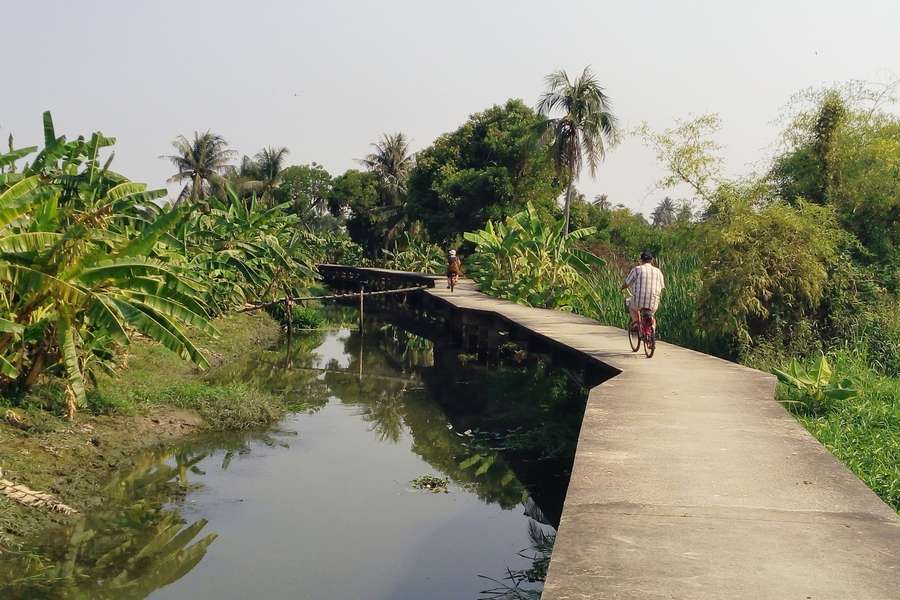 Getting around Ko Kret is easy: the most popular option is walking. The island is roughly square in shape, each side measuring about 2 km, and a path runs around the entire island. The walk at a pleasant pace takes about 1.5- 2 hours. Other options are renting a bicycle from the outfit located in Moo 6 or there are motorcycle taxis that will take you around. If you walk and get tired, you can proceed down one of the paths leading out to piers by the river. From these local piers, you can flag down a small water-taxi. These miniature versions of the famous Thai long-tailed boats will zip you around the island and back to the Pak Kret pier on the mainland if you like.
Getting around Ko Kret is easy: the most popular option is walking. The island is roughly square in shape, each side measuring about 2 km, and a path runs around the entire island. The walk at a pleasant pace takes about 1.5- 2 hours. Other options are renting a bicycle from the outfit located in Moo 6 or there are motorcycle taxis that will take you around. If you walk and get tired, you can proceed down one of the paths leading out to piers by the river. From these local piers, you can flag down a small water-taxi. These miniature versions of the famous Thai long-tailed boats will zip you around the island and back to the Pak Kret pier on the mainland if you like.
While the locals speak little English, there are useful multilingual maps of the island near the ferry pier and at a couple other points around the island. There are occasional distance signposts along the footpath, and most sights around the island have been labelled in English.
Things to see in Ko Kret include;
Wat Poramaiyikawat, at the north-east corner right next to the ferry landing. The main temple on the island, this old monastery is constructed in Mon (Burmese) style and is a focal point of Thailand’s small Mon community: both the scriptures and the daily prayers here are in Mon. The ubosoth is decorated in Italian marble brought in by King Rama V, and a wooden pagoda near the pier houses the remains of one of the abbots. The white, Burmese-style stupa, modeled on Phra Tat Chedi Mutao in Hongsawadi, Myanmar, is said to contain the Buddha’s relics.
Wat Chimplu Suttahawat is on the east coast, about 1 km south of the ferry landing and a good point to turn around if you’re not planning to make the full circuit. The temple has a beautiful small chapel in a very good condition.
Phra Wiharn. This is the venue where the 9.5 metres long reclining Buddha of the late Ayutthaya period is enshrined. The edifice’s outside is decorated with King Rama V’s emblem. Nonthaburi’s Buddha image named ‘Phra Nonthamunin’ enshrined here behind Phra Wiharn was formed in the late Ayutthaya period. Besides, a charming marble Buddha image offered to King Rama V by a Burmese named Sang Sew Sun is placed in front of the Viharn.
Wat Sao Tong Thong. This long-dated temple used to be called ‘Wat Suan Mak’ and is the site of Amphoe Pak Kret’s first primary school. Behind the chapel, the tallest pagoda of Pak Kret is constructed in the Ayutthaya style. Inside the chapel, the gorgeous ceiling paintings finely decorate the edifice. Another name of the temple in Mon is ‘Pia Arlart’.
Wat Phai Lom. This monastery built in the late Ayutthaya period and called by Mon people ‘Pia To’ has a charming chapel.
Kwan Aman Pottery Museum. This pottery museum is notable for its large collection of the distinctive ancient Mon design ceramics.
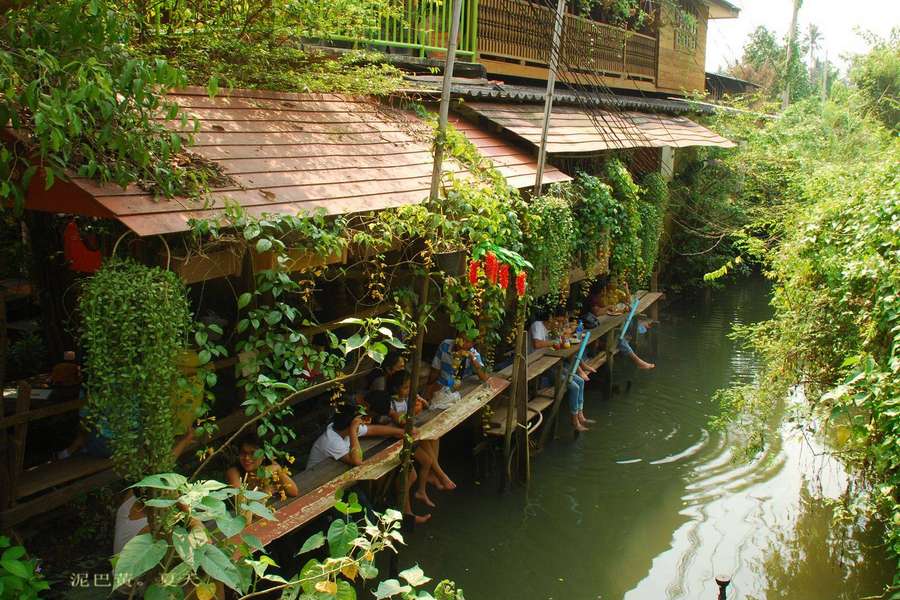 Getting There: The fastest and cheapest way to get there from the city is to take the Blue MRT subway to Tao Poon where you change to the Purple MRT heading towards Khlong Bang Phai and disembark at Nonthaburi Civic Centre. From there take a taxi to Pak Kret, the journey should take no more than 20 minutes. From there take a short ferry across to Ko Kret.
Getting There: The fastest and cheapest way to get there from the city is to take the Blue MRT subway to Tao Poon where you change to the Purple MRT heading towards Khlong Bang Phai and disembark at Nonthaburi Civic Centre. From there take a taxi to Pak Kret, the journey should take no more than 20 minutes. From there take a short ferry across to Ko Kret.



